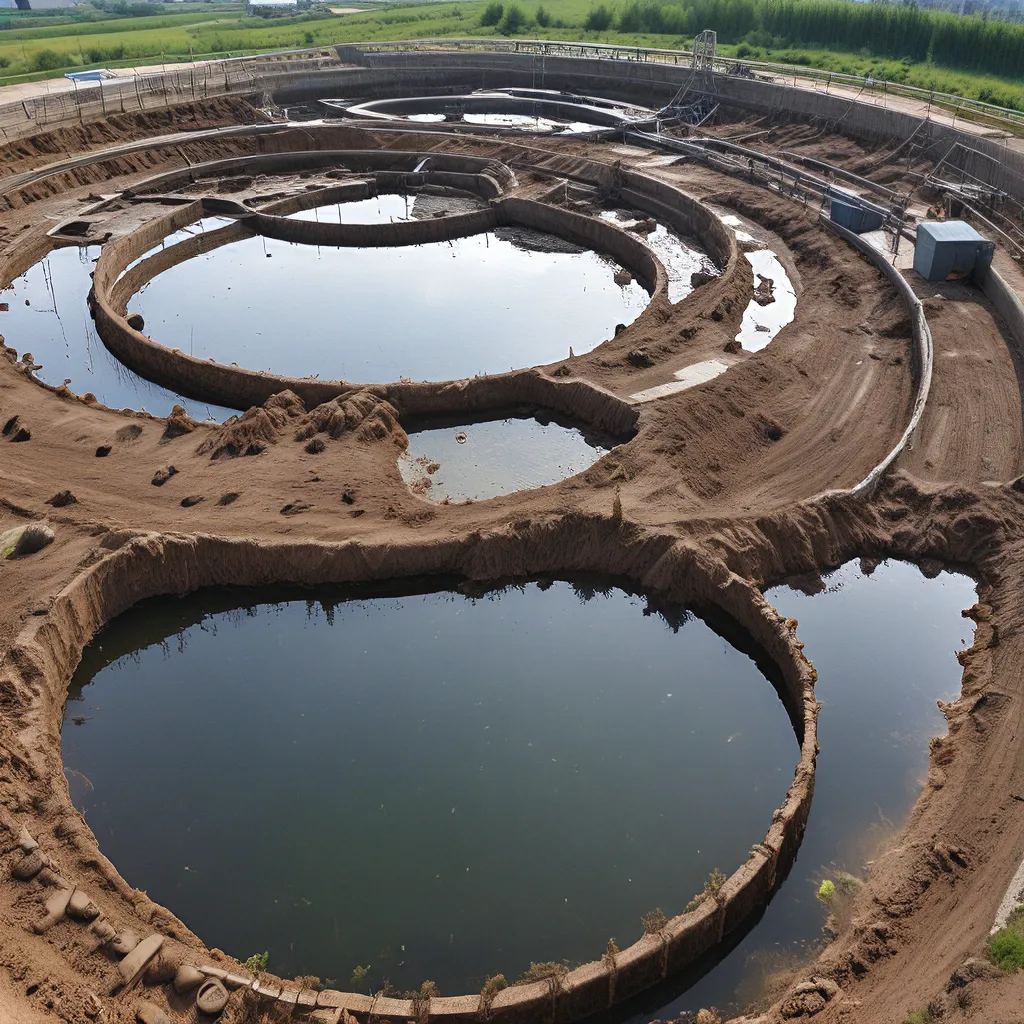
As an environmental enthusiast, I’ve always been fascinated by the concept of the circular bioeconomy – the idea of transforming waste into valuable resources. And when it comes to wastewater treatment, I believe we’re on the cusp of a remarkable revolution that could redefine how we approach this critical issue.
Rethinking Wastewater: From Burden to Boon
For too long, wastewater has been seen as a necessary evil – a byproduct of our modern lifestyles that we’ve struggled to manage effectively. But what if I told you that this “waste” could actually be a treasure trove of untapped potential? That’s the premise behind the circular bioeconomy, and it’s a concept that’s rapidly gaining traction in the world of wastewater treatment.
Alpha Wastewater, a leading provider of innovative wastewater solutions, is at the forefront of this revolution. They understand that wastewater contains a wealth of valuable resources, from organic materials and nutrients to metals and chemicals. By harnessing these resources through advanced treatment technologies, we can not only reduce the burden on our environment but also create new revenue streams and contribute to a more sustainable future.
Uncovering the Hidden Treasures in Wastewater
One of the key drivers behind the circular bioeconomy approach to wastewater treatment is the limited availability of natural resources. As our population continues to grow and our demands for resources increase, we’ve put a significant strain on the planet’s finite resources. This is where wastewater comes into play as a renewable source of valuable materials.
Wastewater typically contains high amounts of organic materials, nutrients, metals, and chemicals – all of which have economic value. By implementing innovative valorization techniques, we can extract and repurpose these resources, transforming waste into new products and energy sources.
The Power of Biotechnology: Unlocking the Circular Bioeconomy
One of the most promising approaches to realizing the full potential of the circular bioeconomy in wastewater treatment is the application of biotechnological processes. These advanced techniques offer a feasible way to concentrate and transform wastewater, paving the way for resource recovery and a truly circular system.
Conventional wastewater treatment methods have their limitations, often failing to fully capitalize on the valuable resources present in the waste stream. But with the emergence of innovative technologies like algal treatment, anammox, and microbial fuel cells (MFCs), we’re now able to extract and utilize these resources in remarkable ways.
Beyond Biogas: Diversifying Resource Recovery
While the production of biogas and biohydrogen through anaerobic digestion has long been a focus in wastewater treatment, the circular bioeconomy is pushing the boundaries even further. We’re now exploring the potential for second and third-generation biofuels, as well as biohythane and electricity generation – all derived from the wealth of organic materials present in wastewater.
But the treasure trove of wastewater doesn’t end there. We’re also seeing the recovery of valuable single-cell proteins, biopolymers, metals, and nutrients – all of which can be transformed into a wide range of high-value products that contribute to a more sustainable and circular economy.
Closing the Loop: Wastewater Reuse and Beyond
The circular bioeconomy approach to wastewater treatment isn’t just about extracting resources – it’s also about reusing and repurposing the treated water itself. By integrating concepts like aquaponics, fisheries, and algal cultivation, we can create closed-loop systems that maximize the value of every drop.
Imagine a future where wastewater is no longer a burden but a vital source of renewable resources – a future where waste is seen as a commodity rather than a liability. That’s the promise of the circular bioeconomy, and it’s a future that’s well within our reach.
Towards a Sustainable Future: Challenges and Opportunities
Of course, transitioning to a circular bioeconomy in wastewater treatment is not without its challenges. Implementing new technologies, overcoming regulatory hurdles, and securing the necessary investments are just a few of the obstacles we’ll need to navigate.
But the potential rewards are too great to ignore. By embracing the circular bioeconomy, we can reduce our environmental impact, create new revenue streams, and contribute to the achievement of the United Nations’ Sustainable Development Goals (SDGs). It’s a future that’s worth fighting for, and one that I’m confident we can achieve with the right innovation, collaboration, and determination.
As we continue to explore the Partitions-Release-Recover (PRR) framework and other cutting-edge approaches to wastewater treatment, I’m filled with excitement and optimism. The transformation of waste into valuable resources is not just a dream – it’s a reality that’s rapidly taking shape, and organizations like Alpha Wastewater are leading the way.
So, let’s embrace the circular bioeconomy and unlock the hidden treasures in our wastewater. The future of sustainable resource management is closer than you might think, and I for one can’t wait to see where this journey takes us.